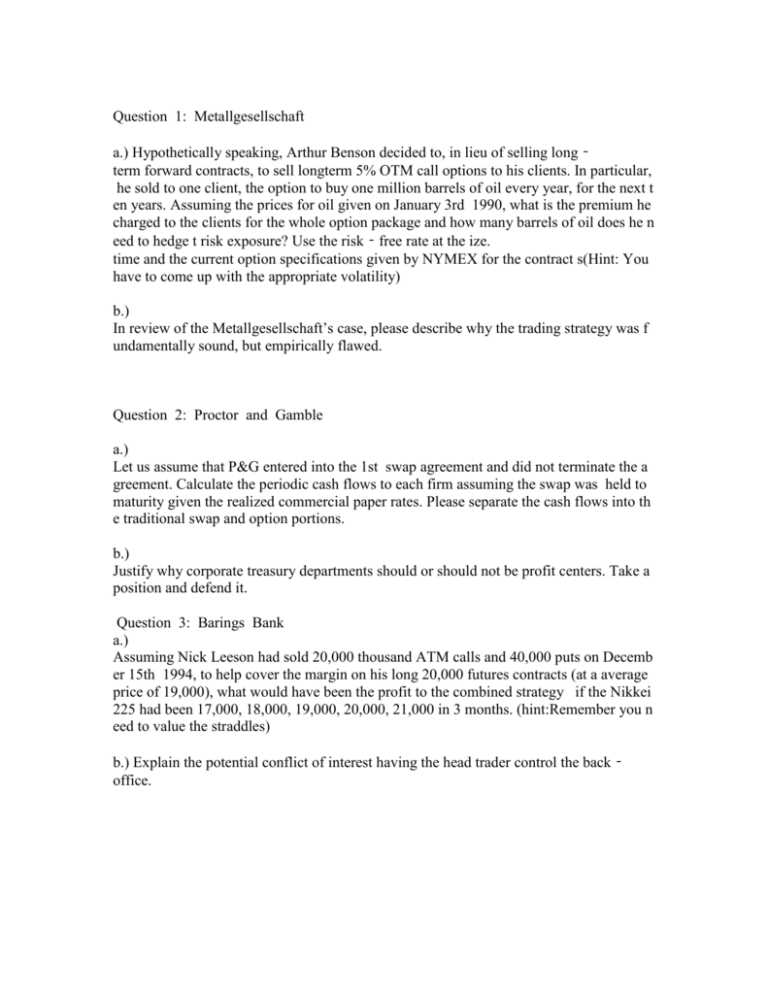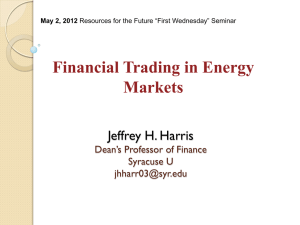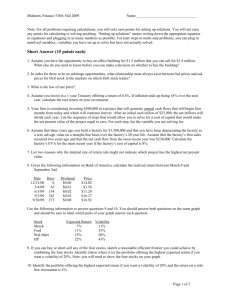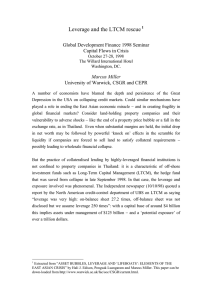Lastassignment
advertisement

Question 1: Metallgesellschaft a.) Hypothetically speaking, Arthur Benson decided to, in lieu of selling long‐ term forward contracts, to sell longterm 5% OTM call options to his clients. In particular, he sold to one client, the option to buy one million barrels of oil every year, for the next t en years. Assuming the prices for oil given on January 3rd 1990, what is the premium he charged to the clients for the whole option package and how many barrels of oil does he n eed to hedge t risk exposure? Use the risk‐free rate at the ize. time and the current option specifications given by NYMEX for the contract s(Hint: You have to come up with the appropriate volatility) b.) In review of the Metallgesellschaft’s case, please describe why the trading strategy was f undamentally sound, but empirically flawed. Question 2: Proctor and Gamble a.) Let us assume that P&G entered into the 1st swap agreement and did not terminate the a greement. Calculate the periodic cash flows to each firm assuming the swap was held to maturity given the realized commercial paper rates. Please separate the cash flows into th e traditional swap and option portions. b.) Justify why corporate treasury departments should or should not be profit centers. Take a position and defend it. Question 3: Barings Bank a.) Assuming Nick Leeson had sold 20,000 thousand ATM calls and 40,000 puts on Decemb er 15th 1994, to help cover the margin on his long 20,000 futures contracts (at a average price of 19,000), what would have been the profit to the combined strategy if the Nikkei 225 had been 17,000, 18,000, 19,000, 20,000, 21,000 in 3 months. (hint:Remember you n eed to value the straddles) b.) Explain the potential conflict of interest having the head trader control the back‐ office. Question 4: LTCM a.) When the bond‐ arbitrage strategy dried up, one of the strategies LTCM employed was volatility arbitrage. Let us examine how profitable this is, with a twist. Calculate the GARCH (1,1) volatility of the S&P 500 from 1986 through 2006. Calculate the daily differences between this ser ies and the VIX index. Now calculate 30‐day (22‐ trading day) returns for each day in the sample. Form 10‐ volatility difference baskets (highest and standard deviation is for each basket. seem like a good strategy to employ? to lowest), and see what the average return Is there a monotonic relationship? Does this b.) In your opinion, what went wrong at LTCM?



![[These nine clues] are noteworthy not so much because they foretell](http://s3.studylib.net/store/data/007474937_1-e53aa8c533cc905a5dc2eeb5aef2d7bb-300x300.png)







